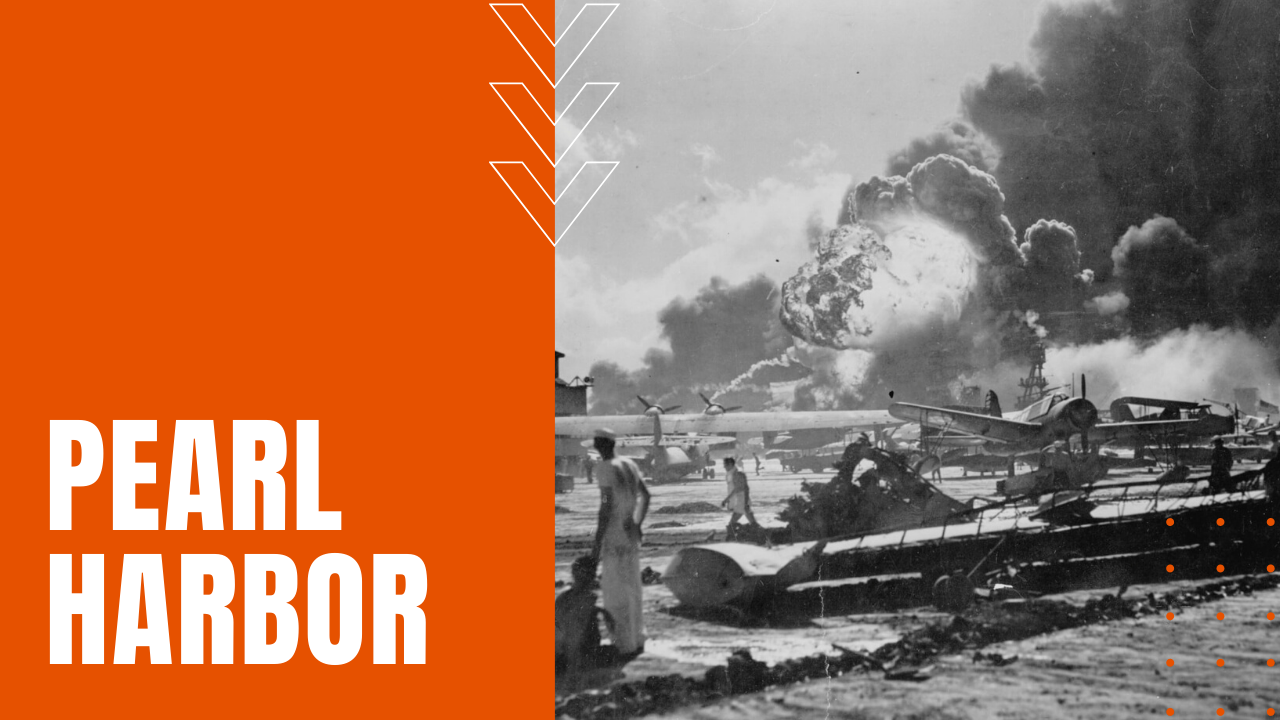Pearl Harbor

Why did Japan Attack Pearl Harbor?
After years of imposed trade sanctions by the United States in response to Japan’s expansionist aggression in China and Southeast Asia, the Empire of Japan came to the conclusion that the only way to increase their influence in the region was to take out the American’s Pacific Fleet based at Pearl Harbor, Hawaii.
The Pearl Harbor Attack
After months of planning and practice, at 8:00 AM Sunday morning, December 7th, 1941, Japanese warplanes filled the sky over Honolulu, wreaking havoc on the American’s idle and unsuspecting Pacific Fleet warships. At 8:10, an 1,800-pound bomb careened through the forward deck of the USS Arizona, exploding an ammunition magazine before sending 1,000 sailors to a watery grave.
Just as the Arizona slipped beneath the surface, torpedoes fired by two-man Japanese subs took out the battleship USS Oklahoma, which in turn rolled onto her side with 400 sailors on board. The two-wave attack by 353 Japanese warplanes was over in less than two hours, crippling or destroying nearly 19 American ships and more than 188 aircraft, taking the lives of 2,403 sailors, soldiers and civilians while wounding an additional 1,178 people.
Fortunately for the Americans, all of her Pacific Fleet aircraft carriers were out to sea at the time of the attack, some of which had returned to the mainland, while others were delivering warplanes to troops stationed on Midway and Wake Islands. A secondary plus was that the Japanese attack failed to damage the American’s vital onshore facilities, such as oil storage tanks, repair shops, shipyards and submarine pens, which allowed the American Navy to rebound relatively quickly after the attack.
Recovery and Retaliation
Within six months, five battleships and two cruisers were patched and re-floated, so they could be sent to shipyards in Pearl Harbor and on the West Coast of the United States. Intensive salvage operations continued for another year, witnessing a total of some 20,000 man-hours by underwater divers.
A day later, at the beginning of his speech to Congress requesting a declaration of war, President Franklin D. Roosevelt delivered a speech that still resonates within the collective minds of Americans. On December 8th, 1941, the United States Congress declared war on the Empire of Japan, officially entering World War Two in both the Pacific and European Theaters of war, which would ultimately result in the defeat of Nazi Germany and the Axis Nations, followed by Japan’s surrender after nuclear bomb detonations over Hiroshima and Nagasaki. All told, during the five-plus years of World War Two, 70 to 85 million people would lose their lives to the madness of war.
